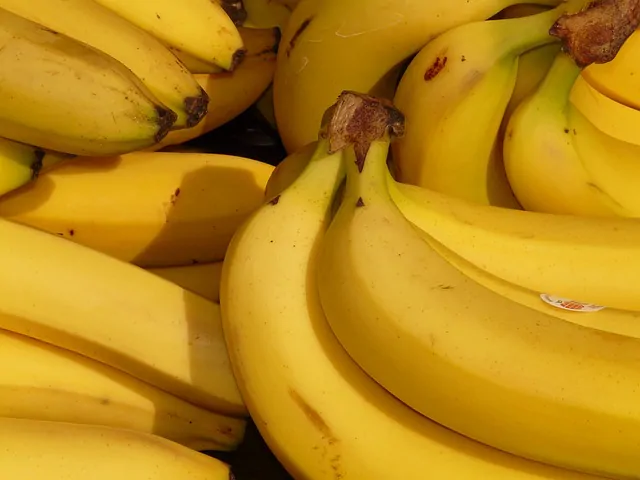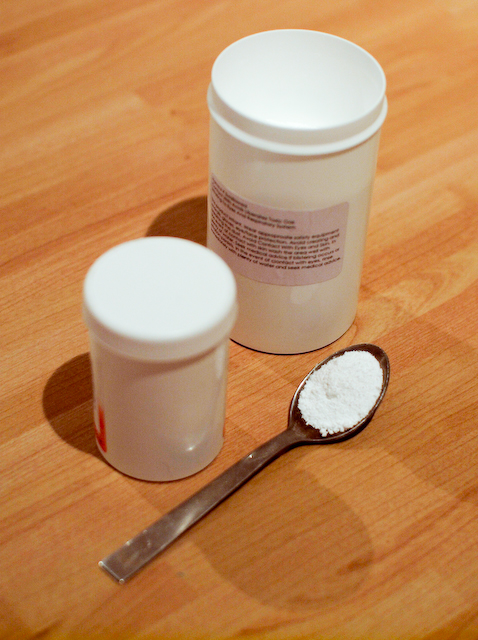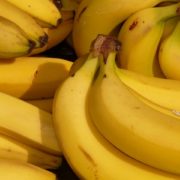Banana Wine Recipe – A Wine You Need To Try For Yourself
Banana wine might sound odd, believe me, I was unsure of how this wine recipe would taste too but it is definitely worth trying.
Bananas are full of sugar and are one of the sweetest fruits available to most people. This sweetness is perfect for winemaking and with just a few additions to balance the acidity you will have a very memorable, full-bodied banana wine that will make you wonder why you even questioned this in the first place.
It turns out that bananas are great for winemaking. You will often see recipes for other fruit wines and especially floral wines that call for the addition of bananas because they provide sweetness, body and a subtle flavour boost to wines that would otherwise be a little insipid in wines with less flavour.

The great thing about making banana wine is that you can do it at any time of year.
You can buy bunches of bananas from almost any supermarket across the globe at almost any point in the year. You aren’t constrained to a seasonal harvest like you would be with other fruit.
The other thing is that in many places bananas are one of the cheapest fruits by weight so it makes this banana wine recipe very inexpensive to make.
Table of Contents
Banana Wine Recipe With Endless Possibilities
Banana wine is also a great wine to blend with other fruit wines. If you find a fruit wine you have made is too tart to your liking, for example, blending it with a finished banana wine made with this wine recipe is a great way to bring it back into balance. Banana pairs so well with other fruits and spices the possibilities are endless with this recipe.
A good thing to experiment with is starting this banana wine recipe as laid out below and then adding additional fruits to the wine to create your own blends, banana and raspberry work well together and I have made this wine a few times. Spices work well too if you like a sweeter-tasting wine banana and vanilla wine when back-sweetened makes a great dessert wine.
As you can tell there is plenty of range to come up with your own signature wine using a simple banana wine recipe.
You can also be sure that not many people with have tried banana wine before as there is virtually no industrial production of banana wine only small home-scale production.
This is why you are going to have to make this banana wine recipe for yourself.
Picking and Prepping Your Bananas For Making Banana Wine
This recipe requires you to use sliced bananas, peel and all so when you are picking bananas you will probably want to go with something that is organic. This way you will know there are no pesticides or other sprays on the banana peel that will get into your wine.
The next thing you will want to do is to keep the bananas around for a while to ripen. The riper the better without going completely black.

We want the skins to have large brown spots and the bananas to be as sweet as possible so buy the bananas ahead of time and allow them to get over-ripe.
Lastly, it should be noted that this is a recipe for banana wine and will not work for plantains.
Equipment What You Will Need For This Banana Wine Recipe – Makes 1 gallon / 4.5 litres
- Large Stock Pot
- Small Fermenting Bucket
- Demijohn
- Syphon
- Fine Straining Bag
- Airlock & Bung
Banana Wine Ingredients
- 4.5 litres Water
- 1.4 kg / 3lb Bananas
- 900g / 2lb Sugar
- 1/4 tsp Tannin
- 3 tsp Acid Blend
- 1/2 tsp Pectic Enzyme
- 1 tsp Yeast Nutrient
- 1 Campden Tablet
- 1 Sachet Yeast (Lallemand EC-1118 is a good choice but experiment with others)
Banana Wine Recipe Method
1. Bring half of the water to a boil in the large stockpot. Whilst the water is heating up slice the bananas including the skins and secure them in the straining bag. Submerge the straining bag in the boiling water and simmer gently for 30 minutes.
2. After simmering for 30 minutes remove the pot from the heat. Lift out the straining bag with the bananas and set it to one side for a moment. Pour the liquid from the pot into a sanitised fermenting bucket and then add the straining bag with the bananas as well.
3. Take the remaining half of the water and add to the stockpot with the sugar. Heat to a boil and stir to dissolve the sugar and prevent it from burning. Simmer for a few minutes, remove from the heat and then add this to the fermenter. Along with this add the acid blend, tannin and yeast nutrients. Allow cooling to room temperature.
4. Once cooled add the crushed Campden tablet and mix thoroughly, allow to stand for at least 12 hours.
5. After at least 12 hours add the pectic enzyme and mix thoroughly. 24 hours after adding the pectic enzyme add the yeast by sprinkling it onto the surface of the must, fit a lid and airlock. Fermentation will begin a few days after this.

6. Allow fermentation to progress for a week stirring daily, after this remove the straining bag and the remains of the banana. Leave for a further 3 days and the fermentation should have died down completely. At this point, you can syphon the banana wine into a demijohn or carboy, fit with a bung and airlock.
7. Allow the wine to condition in the demijohn for 3 – 4 months racking to a sanitised carboy once or twice after sediment builds up.
8. After conditioning, for at least 4 months or up to 6 you are ready to bottle the wine. You may want to sample the banana wine and back sweeten it if you prefer a less dry or sweeter wine. Once bottled I like to set aside a few bottles for a number of months and you will notice the banana wine will keep improving with age up to a couple of years.




This is my first attempt at banana wine. I followed step three and added tannin, nutrient, and acid while the must was still very hot. Should I have let it cool prior to adding?
No, it is fine for tannin, nutrient and acid to be added whilst hot. The yeast of course would not be.
Most certainly. I always freeze my fruit of whatever kind and then put the frozen fruit, sugar, and boiling water in the primary fermenting bucket. Only when the water fruit sugar mix is at room temperature do I add the chemicals. Freezing the raw fruit helps extract the juice as the boiling water cools.
Is the weight of the bananas before or after peeling?
Before, although it won’t make too much difference.
Can I make the wine using my frozen bananas?
Yes, frozen fruit is no problem. I freeze a lot of fruit before making wine as it breaks the fruit down which allows more flavour to be extracted.
you dont peel the bannanas
First time to do this.
So, I did Not boil my bananas while making my must. I just put about 4 lbs of bananas in a bucket and added water.
Everything was going good during fermentation. But after I my first transfer into another bucket my wine is still extremely cloudy and even a little blackish grey.
The wine doesn’t taste bitter. Just sweet and really twangy.
Is my wine ruined or is there anything I can do? Or will the sediments slowly settle or what?
The sediment will take time to clear so try not to worry. Keep an eye on the progress and sample as you go, it really is a case of trial and error.
Hello! I am looking forward to trying this. Is it acceptable to just use the same amount citric acid instead of an acid blend?
It will be fine although the acidity won’t be as rounded it will be more of a citrus tartness.
Is the tannin necessary or is it put in to make it more like a red wine than a white wine?
Also curious about the sugar as bananas are so sweet. My dad made wine from grape juice without adding sugar. Thanks
It is not strictly necessary, I find it improves the depth of the wine but there is no problem if you leave it out.
You will definitely need sugar to make this wine. Grape wines ferment just the juice and they have a higher sugar content than bananas. This wine is made by mixing the bananas with water so the sugar content is reduced.
Wondering if you have any thoughts on rehydrating organic dehydrated bananas. The available sugars are high. Think raisins instead of banana chips.
Also – are the peels really necessary? What do they contribute? Can they potentially be added in like grape must if they’re truly essential?
I am not sure if dried bananas are treated in anything like oil or preservatives but it would work in theory. You would need a lot less by weight to get the same level of flavour and sugar.
The skins can be left out they are not essential. Hope this helps.
Can I add vanilla and more sugar right before bottling.
You can backsweeten the wine if it is too dry. This guide will guide yo through what you need to do.
Hi, thanks for the recipe!
I’ve followed to the letter in two batches, except I used 2 tsp citric acid (as that’s what I had) and I’ve used 5 litres water per batch with an extra 2 small bananas so I definitely get a gallon after the first rack. I’m using 10 litre fermentation buckets and it’s up to the 7 litre mark. Will add 1:1 sugar syrup if the first gravity reading is a bit low. Fingers crossed all goes well, it’s just cooling now and the kitchen smells lovely 🙂
Plan on trying your strawberry recipe next!
Sounds good, really hope it turns out nice for you. Strawberry wine is a favourite of mine!
Hi , thank you for the guidance it was so awesome and helpful.
I just have a question, in step 7 , should we leave the carboy with the airlock for 3-4 months, or just leave the carboy fully closed in a dark place maybe.
You can do either. If the wine has stopped producing CO2 then you don’t need an airlock. I usually age with an airlock just in case any residual CO2 escapes so this avoid any pressure building up.
if the fermentation is complete… no more sugar, yeast stabilized… you can seal the carboy, but if tjere is still sugar and active yeast your carboy will explode if gases cannot escape. I always found it best to determine what level of alcohol you want and add sugar to your must to reach that alcohol potential. Then you ferment the wine out completely dry… no remaining sugar. Rack it offthe dregs. Then stabilize the wine. After all yeast are dead, add dugar to sweeten to the level you like best.its amazingly difficult to stary with too much sugar hoping to stop the fermentation at the proper point so that the alcohol content is right and its at the right level of sweetness. That requires precience I dont posess. Ifyou over sweeten at the beginning you risk ending with a low alcohol wine that is syrupy sweet and undrinkable. ALWAYS PLAN THE ALCOHOL POTENTIAL, ferment it out dry, stabilize then sweeten to your taste.
Wow interesting recipe will try it soon. So excited. How much alcohol did this type of yeast produces? For this recipe I mean?
The wine will be around 12 – 13% depending on the amount of sugar in the bananas.
Do I need to use
alpha amylase enzyme to convert starch to sugar
No, enzymes are not needed for this recipe. The flavour is what we are looking for, most of the starches in the banana will not be converted.
If starch was not converted in this wine would it not be cloudy and hard to clear
Starch will cause haze and the only way to really deal with it and clear the wine is to use an amylase enzyme. This is available from most home brew shops, you could also try fining but not all fining agents are effective against starch haze.
Did you use pectin before fermentation? If it is possibly pectin haze you can use pectic enzyme once fermentation has stopped to remove this.
Good luck
Then again there is always the old method which clears the starch haze.
I sometimes add a little white grape juice for vinosity. Do you think this is a good idea. Say a 250ml bottle.
I think this is a good idea. Take a hydrometer reading before pitching the yeast so you know the ABV.
This will be my first time. Is there no risk of getting bad bacteria when opening and stirring during the fermentation?
During the peak of fermentation there is a lot of CO2 being produced and the alcohol level is rising. Use a sanitised spoon and there is very minimal risk of bacteria.
Great
If I want to make the banana wine with addition of 20litters of water, then how many sachets of yeast do I use?
Or like as shown below for 4.5ltrs of water.
1.4 kg / 3lb Bananas
900g / 2lb Sugar
1/4 tsp Tannin
3 tsp Acid Blend
1/2 tsp Pectic Enzyme
1 tsp Yeast Nutrient
1 Camp den Tablet
1 Sachet Yeast .
Now the water is 20ltrs I will use.
One sachet will be fine. You will have a lot less alcohol if you don’t multiply the ingredients so it may be quite insipid.
In step 6, can the primary fermentation be done in a 5 gallon food safe bucket – open (or semi-open) – or does it need to be in a bucket/carboy with an airlock?
I ferment in a bucket with an airlock and this is what I would suggest.
Hi
You have sort of answered this question but just to check ..if I want to make 5 gallons I multiply the bananas and sugar by 5 but what about the rest of the ingredients
Multiply all the ingredients except the yeast. The yeast sachet will say how much it can ferment and this is usually around 5 gallons so you may need only one sachet. Hope this helps.
I’m really interested to find out how this tastes. I wonder if you can really taste the banana or would it be really faint
Would you double up on the ingredients if you were say making 2 gallons?
Yes double all the ingredients except the yeast which will be enough for up to 5 gallons in most packages. It should state on the yeast packet